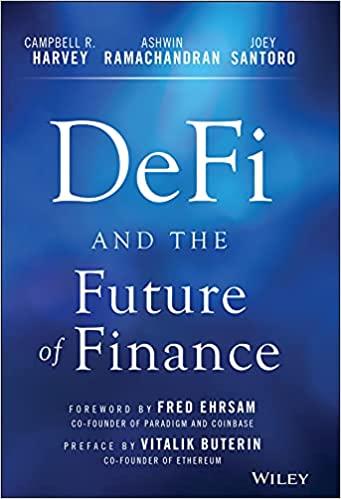Question
Jim Pernelli and his wife, Polly, live in Augusta, Georgia. Like many young couples, the Pernellis are a 2-income family. Jim and Polly are both
"Jim Pernelli and his wife, Polly, live in Augusta, Georgia. Like many young couples, the Pernellis are a 2-income family. Jim and Polly are both college graduates and hold high-paying jobs. Jim has been an avid investor in the stock market for a number of years and over time has built up a portfolio that is currently worth nearly $375,000. The Pernellis portfolio is well diversified, although it is heavily weighted in high-quality, mid-cap growth stocks. The Pernellis reinvest all dividends and regularly add investment capital to their portfolio. Up to now, they have avoided short selling and do only a modest amount of margin trading. Their portfolio has undergone a substantial amount of capital appreciation in the last 18 months or so, and Jim is eager to protect the profit they have earned. And thats the problem: Jim feels the market has pretty much run its course and is about to enter a period of decline. He has studied the market and economic news very carefully and does not believe the retreat will cover an especially long period of time. He feels fairly certain, however, that most, if not all, of the stocks in his portfolio will be adversely affected by these market conditionsalthough some will drop more in price than others. Jim has been following stock-index futures for some time and believes he knows the ins and outs of these securities pretty well. After careful deliberation, Jim and Polly decide to use stock- index futuresin particular, the S&P MidCap 400 futures contractas a way to protect (hedge) their portfolio of common stocks. Questions
A. Explain why the Pernellis would want to use stock-index futures to hedge their stock portfolio and how they would go about setting up such a hedge. Be specific.
1. What alternatives do Jim and Polly have to protect the capital value of their portfolio? 2. What are the benefits and risks of using stock-index futures to hedge?"
2. What are the benefits and risks of using stock-index futures to hedge?"
B. Assume that S&P MidCap 400 futures contracts are priced at $500 * the index and are cur- rently being quoted at 769.40. How many contracts would the Pernellis have to buy (or sell) to set up the hedge?
1. Say the value of the Pernelli portfolio dropped 12% over the course of the market retreat. To what price must the stock-index futures contract move in order to cover that loss?
2. Given that a $16,875 margin deposit is required to buy or sell a single S&P 400 futures contract, what would be the Pernellis return on invested capital if the price of the futures contract changed by the amount computed in question b1?"
"C. Assume that the value of the Pernelli portfolio declined by $52,000 while the price of an S&P 400 futures contract moved from 769.40 to 691.40. (Assume that Jim and Polly short-sold one futures contract to set up the hedge.)
1. Add the profit from the hedge transaction to the new (depreciated) value of the stock portfolio. How does this amount compare to the $375,000 portfolio that existed just before the market started its retreat?
2. Why did the stock-index futures hedge fail to give complete protection to thePernelliportfolio? Is it possible to obtain perfect (dollar-for-dollar) protection from these types of hedges? Explain.
D. The Pernellis might decide to set up the hedge by using futures options instead of futures contracts. Fortunately, such options are available on the S&P MidCap 400 Index. These futures options, like their underlying futures contracts, are also valued/priced at $500 times the under- lying S&P 400 Index. Now, suppose a put on the S&P MidCap 400 futures contract (with a strike price of 769) is currently quoted at 5.80, and a comparable call is quoted at 2.35. Use the same portfolio and futures price conditions as set out in question c to determine how well the portfolio would be protected if these futures options were used as the hedge vehicle. (Hint: Add the net profit from the hedge to the new depreciated value of the stock portfolio.) What are the advantages and disadvantages of using futures options, rather than the stock-index futures con- tract itself, to hedge a stock portfolio?"
Step by Step Solution
There are 3 Steps involved in it
Step: 1

Get Instant Access to Expert-Tailored Solutions
See step-by-step solutions with expert insights and AI powered tools for academic success
Step: 2

Step: 3

Ace Your Homework with AI
Get the answers you need in no time with our AI-driven, step-by-step assistance
Get Started


